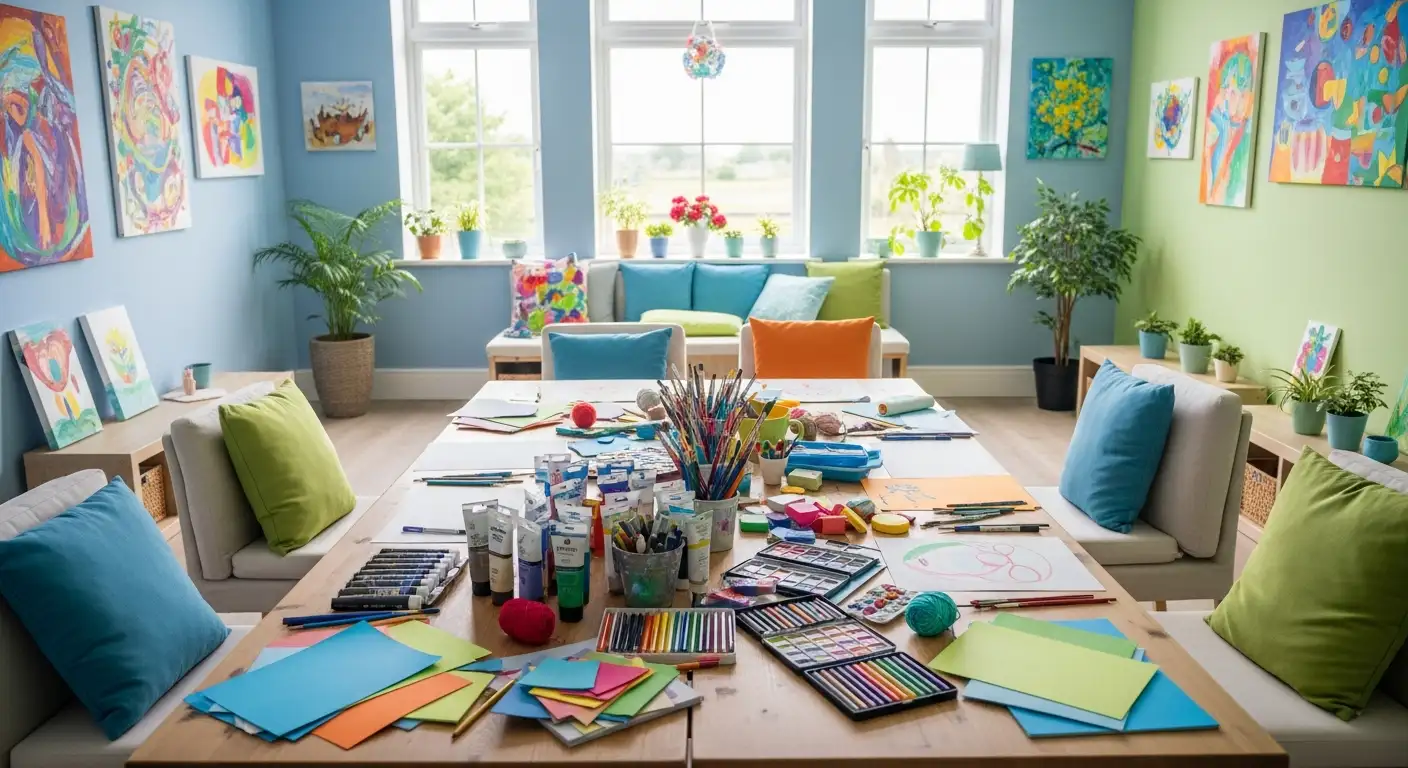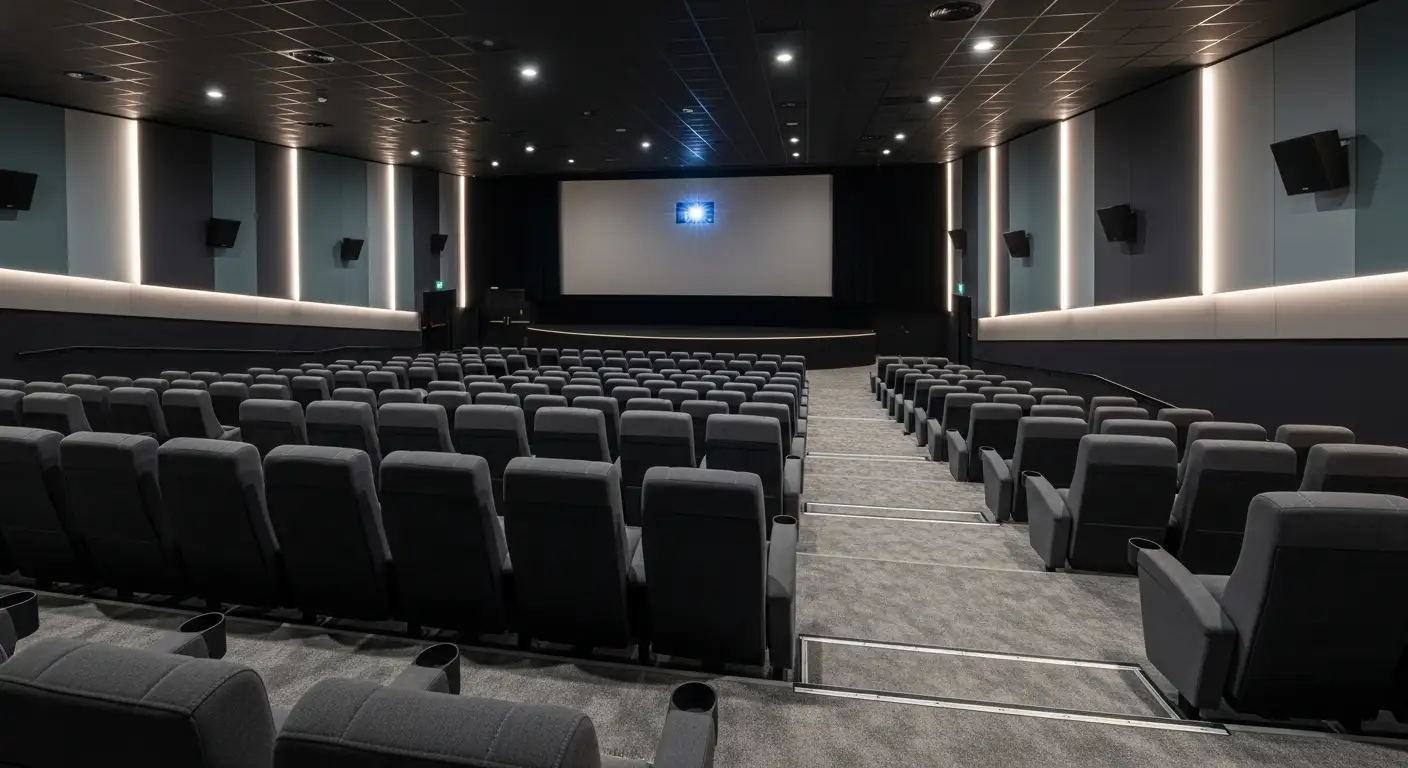Handwashing & Showering To Kids With Autism
Understanding the Unique Hygiene Needs of Children with Autism
Children with autism often face unique challenges related to sensory sensitivities, communication barriers, and the need for routine, which can impact their ability to perform personal hygiene tasks like handwashing and showering. Tailored strategies, patience, and creative approaches are essential to help these children develop confidence and independence in their hygiene routines. This article explores effective methods, sensory management techniques, and educational tools to support children with autism in maintaining good personal hygiene.
Creating a Supportive Environment for Hygiene Activities

How can I manage sensory sensitivities during bathing and hygiene activities?
Managing sensory challenges during bathing involves creating a calm and predictable environment that reduces potential sources of discomfort. For children with autism, adjusting lighting to soft, warm tones can diminish sudden brightness that may be overwhelming. Using gentle, tactile-friendly materials like soft washcloths or sensory-friendly soaps can lessen tactile discomfort.
Visual supports like social stories and visual schedules prepare children for what to expect, reducing anxiety and resisting behaviors. For example, a step-by-step picture chart of the bathing routine can provide clear guidance.
Incorporating sensory-friendly products such as fragrance-free or mildly scented shampoos and soaps helps avoid olfactory sensitivities. Using tools like handheld showerheads allows more control over water flow and pressure, limiting sensory overload.
Gradual desensitization techniques—starting with brief water contact on the hands before progressing to the face and body—help children slowly build tolerance. Consistency in routines and positive reinforcement motivate children and foster cooperation.
Additional tips include involving familiar objects from home, such as favorite towels or toys, and creating a soothing environment by adjusting water temperature to comfortable levels. Patience, flexibility, and positive reinforcement are essential to support children in becoming more comfortable during hygiene activities.
Effective Educational Strategies for Hygiene Skills
Teaching children with autism to manage personal hygiene is essential for their health, social acceptance, and self-esteem. Children with autism often face unique challenges such as sensory sensitivities, communication barriers, and resistance to change, which can make learning hygiene routines difficult.
One of the most helpful approaches involves using visual supports. Picture schedules, checklists, and social stories break down complex tasks like handwashing, showering, toothbrushing, and toileting into clear, manageable steps. These tools reduce confusion, set predictable routines, and make it easier for children to follow through independently.
Demonstration and modeling are also effective. Video-modeling and in-person demonstrations help children imitate behaviors, especially when combined with gradual exposure and positive reinforcement. Using visual timers or countdowns not only clarifies how long an activity should last but also encourages patience.
Breaking routines into small steps, such as wetting hands, applying soap, scrubbing, rinsing, and drying, makes learning more accessible. Supporting each step with rewards or praise reinforces positive behavior and motivates children to practice consistently.
In addition, sensory considerations play a vital role. Adjusting water temperature, choosing preferred products, and incorporating sensory-friendly tools—like soft brushes or unscented soaps—help lessen discomfort and increase cooperation. Gradual desensitization techniques, where children are introduced slowly to water or new textures, can ease anxiety during showering or bathing.
Integrating engaging activities such as singing songs, using fun timers, or rewarding completed routines makes hygiene activities enjoyable and less stressful. Establishing clear and consistent routines with visual supports, complemented by behavioral reinforcement, helps build independence and confidence.
Overall, a tailored combination of visual aids, demonstration, step-by-step instructions, and reward systems can significantly enhance children with autism’s ability to master personal hygiene, promoting their overall well-being.
Supporting Independence in Personal Hygiene

How can I help a child with autism become more independent in personal hygiene skills?
Supporting children with autism in developing personal hygiene independence involves a strategic and sensitive approach. Breaking down each hygiene task into small, manageable steps helps the child grasp what needs to be done without feeling overwhelmed.
Using visual aids, such as picture cards, social stories, or visual schedules, boosts understanding and provides visual cues that guide the child through each step. For example, a handwashing routine might include pictures illustrating turning on the tap, applying soap, rubbing hands together, rinsing, and drying.
Establishing consistent routines is crucial. Consistent schedules and predictable patterns reduce anxiety and help the child anticipate what comes next, making the process smoother and more familiar.
Positive reinforcement is highly effective. Praising the child's efforts or offering preferred rewards encourages continued engagement and helps solidify good hygiene habits. For instance, praising the child after successfully brushing teeth or offering a small reward after completing a shower.
Making hygiene activities engaging and tailored to individual sensory needs enhances cooperation. Using sensory-friendly tools like soft toothbrushes, mild-scented or unscented soaps, and incorporating fun elements like singing a song or timers can make routines more enjoyable.
Every child with autism has unique sensory sensitivities and preferences. Approaches should be customized accordingly—for example, adjusting water temperature for comfort or choosing visual aids that are visually appealing to the child.
Incorporating these strategies consistently, with patience and flexibility, can significantly improve a child's independence in personal hygiene. Collaborating with professionals such as occupational therapists or behavioral analysts can provide tailored guidance and support for ongoing development.
Teaching and Reinforcing Personal Hygiene Skills

How can visual supports be used to teach hygiene routines?
Using visual aids is an effective way to help children with autism learn personal hygiene skills. Visual supports like picture cards, visual schedules, and step-by-step charts break down complex tasks such as handwashing and showering into simple, understandable steps. These tools create a predictable routine, reducing anxiety and confusion.
For example, a handwashing chart with pictures illustrating each step — turning on the tap, applying soap, scrubbing, rinsing, and drying — can guide the child through the process. Visual checklists help children verify they’ve completed each phase, increasing their independence.
What demonstration and video-modeling techniques assist in teaching hygiene?
Demonstrations are powerful teaching tools, especially when combined with video-modeling. Showing the child a caregiver performing the activity, or using videos that depict other children engaging in handwashing or showering, helps normalize the routine.
Video-modeling allows children to observe and imitate desired behaviors at their own pace. Repetition and visuals make it easier for children with autism to understand the correct sequence and proper technique, fostering confidence and autonomy.
How does positive reinforcement encourage hygiene routines?
Positive reinforcement involves praising children or rewarding them with preferred items when they successfully complete hygiene activities. Rewards like stickers, extra playtime, or verbal praise motivate children and reinforce the desirability of maintaining good hygiene habits.
Consistent praise when children follow routines or succeed in tasks boosts their self-esteem. It helps solidify their understanding that good hygiene is valued and beneficial, encouraging ongoing practice.
What role do gradual exposure and sensory modifications play?
Many children with autism experience sensory sensitivities that can make hygiene tasks overwhelming. Gradual exposure involves slowly and patiently introducing new sensations, such as water or soap, to reduce distress.
Sensory modifications, like using mild scented soap, temperature-controlled water, or sensory-friendly tools (foam soap, soft washcloths), help make the process more comfortable. Creating a calming environment and allowing the child control over certain aspects — like water temperature or choice of towel — supports positive experiences.
How can therapists and caregivers collaborate to support hygiene learning?
Involving occupational therapists and other specialists ensures tailored strategies to each child's needs. Therapists can provide customized exercises, sensory integration techniques, and specific approaches to teach hygiene skills.
Collaboration among caregivers, teachers, and professionals ensures consistency and reinforcement across settings. Regular communication and shared strategies maximize the effectiveness of teaching hygiene routines, helping children develop independence and confidence.
Supporting Caregivers in Hygiene Development
How can caregivers support children with autism in developing personal hygiene routines?
Supporting children with autism in learning personal hygiene involves a combination of strategies tailored to their unique needs. Caregivers should start by establishing consistent routines and visual supports, such as picture schedules, social stories, or video demonstrations. These tools create a predictable structure, helping children understand what to do and reducing anxiety.
Breaking down hygiene tasks into small, manageable steps is crucial. For instance, handwashing can be divided into wetting hands, applying soap, scrubbing, rinsing, and drying. Using visual aids for each step helps reinforce understanding and memory.
Demonstrating behaviors and modeling the desired actions provide clear examples for children to imitate. Verbal prompts accompanied by gestures can further support learning. Positive reinforcement, such as praise or small rewards, encourages children to engage with routines and fosters independence.
Addressing sensory sensitivities is also vital. Many children with autism may be overwhelmed by certain textures, water temperature, or sounds. Using sensory-friendly products—like unscented soaps, adjusting water temperature carefully, or incorporating calming tools—can make hygiene activities more comfortable.
Patience and flexibility are essential throughout the process. Each child’s pace varies, and adapting strategies to their responses ensures progress. Collaborating with occupational therapists, teachers, and caregivers creates a supportive network that nurtures confidence and skill development in personal hygiene.
Utilizing Tools and Technologies to Aid Hygiene Routines
 Children with autism often experience challenges related to sensory sensitivities, which can make personal hygiene routines difficult. To support their independence and comfort, various tools and techniques can be employed.
Children with autism often experience challenges related to sensory sensitivities, which can make personal hygiene routines difficult. To support their independence and comfort, various tools and techniques can be employed.
Automatic soap dispensers, visual timers, and sensory toys are among the gadgets that make hygiene activities more engaging and predictable. For example, visual timers and countdowns help children understand how long they should spend washing their hands or taking a shower, reducing anxiety about the process. Sensory toys and visual aids provide comfort and distraction, turning routine activities into more positive experiences.
Supporting independence and reducing stress can also be achieved through careful preparation. In unfamiliar environments such as public restrooms or new bathrooms, familiar items like favorite toys or sensory tools can ease the transition and increase cooperation.
Gradual water exposure and desensitization techniques are essential for children overwhelmed by water, sounds, or sensations. Slowly introducing water or starting with short, supervised rinses helps build comfort over time.
Involving occupational therapists and specialists is highly recommended. These professionals can tailor strategies to each child's unique sensitivities and responses, providing personalized interventions that make hygiene routines more manageable.
In summary, combining technological aids, environmental preparation, gradual exposure, and expert guidance creates a supportive framework that promotes hygiene, enhances independence, and reduces stress for children with sensory sensitivities.
Encouraging Progress in Personal Hygiene for Children with Autism
Supporting children with autism in developing effective and independent hygiene routines requires understanding their unique sensory needs, utilizing visual and behavioral strategies, and maintaining patience and consistency. By creating calming environments, employing tailored teaching methods, and leveraging tools and professional support, caregivers can significantly improve the hygiene experiences of children with autism. Encouraging independence not only promotes physical health but also boosts confidence, social acceptance, and self-esteem. Through continuous encouragement, customization, and a compassionate approach, caregivers and professionals can foster lasting skills that empower children with autism to manage their personal hygiene confidently and comfortably.
References
- Teaching Personal Hygiene Skills to Kids with Autism - Childwise ABA
- Sensory Processing Disorder Hand Hygiene Ideas For Children
- Showering Strategies for Children with Autism - Astra ABA
- A Guide to Teaching Kids With Autism Hygiene Skills - MySpot
- Teaching Handwashing to Children With a Developmental Disability
- What Makes Autism and Showering So Challenging? - Goally
- A Guide to Teaching Kids With Autism Hygiene Skills
- Personal hygiene for autistic pre-teens and teenagers
- 10 Personal Hygiene Skills for Kids with Autism | Aim Higher ABA
Other articles
Recent articles

Cultural Perspectives On Autism Around The World

Autism And Creative Arts As Emotional Expression Tools

Developing Emotional Regulation Skills In Autistic Teens

Best Sensory-Friendly Lighting Solutions For Autism

Cognitive Behavioral Therapy Adaptations For Autism

Best Practices For Autism-Friendly Movie Screenings

Autism And Eating Challenges Beyond Picky Eating

Best Practices For Autism-Friendly Public Transport Design

Best Ways To Foster Collaboration Between Parents And Schools For Autism Support

Supporting Autistic Children During Transitions Between Activities

The Role Of Teachers In Fostering Autism Peer Acceptance

Using Art Therapy To Support Children With Autism

Autism And Strategies For Addressing Sensory Defensiveness

Autism And The Benefits Of Structured Leisure Activities

How To Support Autistic Students During Exam Season

Autism And Goal Setting For Personal Growth

How To Use Gamification In Autism Learning Programs

How Schools Can Reduce Bullying Of Autistic Students

Early Intervention Strategies For Autism Spectrum Disorder

The Role Of Therapists In Autism Life Skills Coaching

How To Support Autistic Individuals In Crisis Situations

Autism And Self-Care Routines For Stress Management

Understanding Echolalia And Its Role In Autism Communication

Autism And Fine Arts Education Benefits

The Impact Of Multisensory Learning On Autism Education

How Family Counseling Supports Autism Household Dynamics

Best Practices For Inclusive Playgrounds For Autism

Best Practices For Autism-Friendly Shopping Centers

How Autism Affects Fine Motor Skill Development

Best Ways To Introduce Sensory Activities Into Daily Routines

How Sports Teams Can Be Inclusive Of Autistic Players

Autism And Strategies For Building Workplace Resilience

Autism And The Impact Of Hormonal Changes During Puberty

How To Support Autistic Students In Foreign Language Classes

Best Ways To Teach Money Skills To Teens With Autism

Supporting Siblings Of Children With Autism

Autism And Co-Occurring Gastrointestinal Disorders

The Role Of Art Projects In Autism Sensory Integration

How Schools Can Incorporate Sensory Break Spaces

Best Practices For Autism Sensory Regulation At School

Autism And Strategies For Teaching Organizational Skills

Understanding The Relationship Between Autism And Anxiety Disorders

Autism And Life Planning For Long-Term Care

Exploring Visual Supports In Autism Education

Ways To Encourage Social Interaction In Children With Autism

The Connection Between Autism And Dyscalculia

The Role Of Occupational Therapy In Transition Planning For Autism

The Role Of Physical Therapists In Autism Motor Skills Support

How To Teach Decision-Making Skills To Autistic Young Adults

The Connection Between Autism And Epilepsy

Best Practices For Transitioning Autistic Children Into New Schools

Autism And Time Management Challenges In Adulthood

The Role Of Visual Arts In Autism Communication Development

How To Address Tactile Defensiveness In Autism

Best Practices For Telehealth Autism Therapy

How To Help Autistic Children Develop Friendship Skills

How Schools Can Support Autistic Students In Career Prep

Best Strategies For Autism-Friendly Event Planning

Understanding Noncontingent Reinforcement In Autism Behavior Plans

How Drama Therapy Benefits Autistic Individuals

Best Practices For Autism-Friendly Fitness And Recreation Centers

Best Ways To Promote Healthy Social Media Use For Autistic Teens

How To Help Autistic Children Cope With Public Speaking

Autism And Strategies For Managing Unexpected Changes

Best Podcasts About Autism For Parents And Educators

Autism And The Impact Of Seasonal Changes On Behavior

The Role Of Diet In Managing Co-Occurring Conditions With Autism

Sleep Challenges In Autism And Practical Solutions

Best Ways To Build Daily Routines For Autistic Children

Best Practices For Supporting Autistic Entrepreneurs

Autism And Strategies For Navigating Large Social Gatherings

Adaptive Sports And Recreational Activities For People With Autism

Autism And The Benefits Of Story-Based Learning Activities

Understanding The Role Of Play In Autism Development

Autism And The Impact Of Environmental Noise On Learning

How To Create Autism-Friendly Community Spaces

Autism And Chronic Health Conditions: What To Know

The Role Of Care Managers In Autism Life Planning

How To Teach Social Boundaries To Autistic Children

How Autistic Individuals Experience Empathy Differently

How To Support Autistic Employees In Remote Work Settings

Autism And The Relationship Between Motor Skills And Learning

How To Create Community Resource Guides For Autism Families

How To Teach Daily Living Skills To Autistic Teens

Autism And The Impact Of Mind-Body Practices On Stress Reduction

Autism And The Benefits Of Outdoor Group Activities

How To Create Autism-Friendly Sensory Paths In Schools

Best Practices For Autism-Friendly Park And Recreation Areas

Autism And Strategies For Reducing School Refusal

Supporting Autistic Individuals In Public Speaking

The Role Of Diet In Managing Autism Symptoms

The Benefits Of Gardening Clubs For Autism Social Development

How To Prepare Autistic Children For Dental Visits

Autism And Employment: Career Paths That Work

Best Practices For Autism-Friendly Hotels And Lodging

The Impact Of Screen Time On Autism Development

Autism Screening Tools For Early Childhood

The Role Of Physical Exercise In Autism Therapy

Best Strategies For Supporting Autistic College Students

The Role Of Technology In Autism Early Detection
We’re All About You, Your Family, and Your Child

